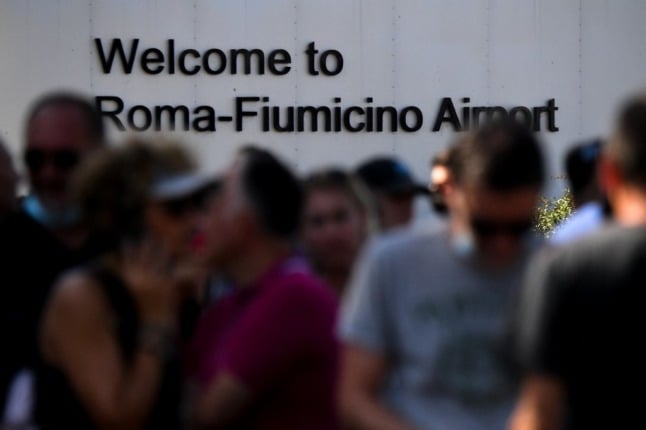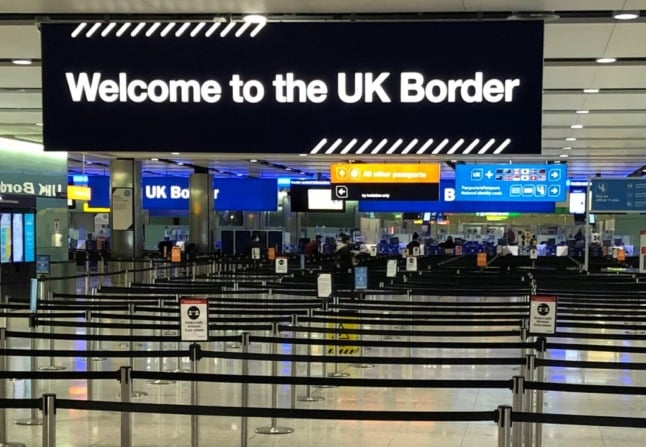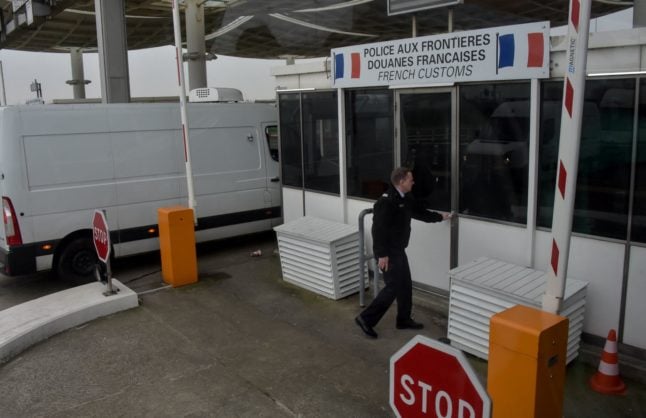With soaring infection rates throughout Europe, governments across the bloc are working to contain the spread of a fourth wave of coronavirus.
So far, the numbers in Italy remain comparatively low and the government is working on new measures aimed at keeping the Covid infection rate down before Christmas – without resorting to business closures or lockdowns, at least unless the situation dramatically worsens in the coming weeks.
READ ALSO: Q&A: Answers to your questions about Italy’s travel rules
Within the EU/Schengen zone
Current rules – Presently, EU and Schengen zone countries are classified as List C countries in Italy, which means travel to/from these countries is permitted without the need to provide a reason.
However, there may be regional restrictions and it is possible that individual countries in this category have entry restrictions.
Therefore, the authorities recommend checking the country profile on Italy’s travel information website to check first.

Passengers arrivng in Italy from List C countries need to show a Covid-19 health pass, which proves the bearer has been fully vaccinated at least fourteen days previously, has recovered from Covid-19 or has tested negative.
Passes issued in any EU or Schengen zone country are recognised at the Italian border.
Since it was rolled out in July the EU’s Covid certificate has allowed for those vaccinated, recovered or who tested negative, to travel freely within the bloc without the need for subsequent tests or quarantine.
Travellers must also complete an online form called a digital Passenger Locator Form, or dPLF. Find it here.
New restrictions?
Since the introduction in July of the EU digital vaccine pass, travel has been pretty seamless within the EU.
However, with cases now surging in parts of the EU, the consensus between member states has fractured as certain European countries have begun to impose additional travel restrictions on each other once again,
The European Commission now says it recognises the need to tighten the rules of the Covid certificate. For the latest on how this system could change, see here.
The Italian government could bring in its own additional rules, too, and there has been some Italian media speculation about a potential quarantine requirement over the Christmas holidays for people travelling to Italy from countries with high infection rates, including countries within Europe.
It is possible that other non-EU countries may also impose their own extra restrictions on travel to or from Italy. But at the moment, Italy’s health situation is better than that of most of its European neighbours, so this looks unlikely to happen ahead of the Christmas holidays.
The UK
Current rules – As things stand, the UK is one of Italy’s List D countries, which signifies a higher risk category than the countries mentioned above.
As of August 31st, vaccinated and tesed UK travellers do not have to undergo a five-day quarantine on arrival and that rule remains current, with no changes in place for UK travellers wanting to enter Italy.
It’s necessary to show a negative result of a molecular or antigenic swab test carried out within 48 hours prior to entry into Italy, and certification issued on completion of the vaccination cycle.
This must be with a vaccine recognised by the EMA (European Medicines Agency).

Travellers must also complete an online form called a digital Passenger Locator Form, or dPLF. Find it here.
As the UK’s case numbers continue to be much higher than Italy’s, it’s possible that tighter travel rules could be introduced. But Italy has so far made no announcement on restricting entry to travellers from Britain.
New restrictions? Covid cases are around four times as high in the UK as in Italy, but so far no new containment measures have been confirmed beyond December 15th where travel between Italy and the UK is concerned.
From the UK’s side, British travel rules don’t always appear to be driven by logic – it has previously imposed travel restrictions such as quarantine on countries with significantly lower Covid rates.
However, the UK government hasn’t announced further travel restrictions for arrivals from Italy since it changed its much-criticised Covid border rules on October 4th.
Reader question: I’ve had one vaccine dose after recovery from Covid – what are my travel options?
Since then, fully vaccinated arrivals from Italy no longer need to quarantine or to take a pre-departure Covid test either. Since October 24th, travellers can take a ‘cheaper’ Day 2 test on arrival, which can be antigen tests (known in the UK as lateral flow tests) rather than the more costly PCR tests.
As for travel into Italy, if rates in the UK continue to plateau or fall, then extra restrictions seem unlikely.
The US, Canada, and Japan
Passengers from the US, Canada and Japan must present a Covid recovery certificate or proof of vaccination when entering Italy.
A negative result of a molecular or antigenic swab test must also be carried out within 72 hours prior to entry into Italy. For a full guide to the rules, see here.
New restrictions?
Most recent travel restrictions have tended to focus on non-EU countries and Italy’s lists for travel have been updated multiple times over the summer and autumn.
However, there is no sign yet that Italy is planning to impose new restrictions ahead of Christmas, and so far Italy has been keen to allow vaccinated travellers from these countries to enter the country.
Italy agreed to recognise the vaccination status of travellers from five non-EU countries including the US, Canada and Japan earlier this year due to their high rates of immunisation, and low infection rates at the time.
Rest of world
Under Italy’s current travel ordinance, India, Bangladesh, Sri Lanka, and Brazil now rejoin all other List E countries, due to concerns about the high rates of Covid in these countries.
Those arriving from Israel are now included among all other List D countries, meaning only a vaccination certificate showing the holder has undergone a full vaccination cycle for at least 14 days will be accepted as valid.
With the latest ordinance, a number of countries were moved from the less-restricted List D to the more-restricted List E.
Albania, Armenia, Bosnia and Herzegovina, Brunei, Lebanon, Moldova, Montenegro, Republic of North Macedonia, and Serbia joined the “Rest of World” in List E.
Meanwhile Bahrain, Chile, Kuwait, Rwanda, and Uruguay are new List D appearances, meaning travel is now allowed from these countries for tourism purposes.
Travel to Italy from List E countries (all countries not included in Lists A, B, C, or D) for tourism purposes is not allowed. Travel from these countries is only permitted for reasons related to work, health, study, absolute urgency, or return to your primary residence.
Travellers coming from these countries were previously subject to their own specific travel restrictions, with travel only allowed under certain specific circumstances.
All passengers arriving from any country must complete an EU passenger locator form that they can show to border officials on entry.
It looks unlikely that these rules will be relaxed this winter as the pandemic continues, but the next review of these rules will come on December 15th.
For more information on the requirements for travel to Italy:
- Italian Foreign Ministry’s information page for Italian citizens returning from abroad and foreign citizens in Italy
- Italian Foreign Ministry’s ‘safe travels’ website www.viaggiaresicuri.it
- Italian Health Ministry’s travel information page.
You can also call the Italian coronavirus information line:
- From Italy: 1500 (toll-free number)
- From abroad: +39 0232008345 , +39 0283905385
Please note that The Local cannot advise on specific cases. For more information about how the rules may apply to you, see the Italian Health Ministry’s website or consult the Italian embassy in your country.
You can keep up with the latest news updates via our homepage or travel news section.



 Please whitelist us to continue reading.
Please whitelist us to continue reading.
Member comments